A new study shows that preeclamptic and hypertensive pregnant women’s risk of getting cardiovascular disease is linked to their baby’s birthweight.
Preeclampsia and other hypertensive disorders of pregnancy (HDPs) are serious…

A new study shows that preeclamptic and hypertensive pregnant women’s risk of getting cardiovascular disease is linked to their baby’s birthweight.
Preeclampsia and other hypertensive disorders of pregnancy (HDPs) are serious…
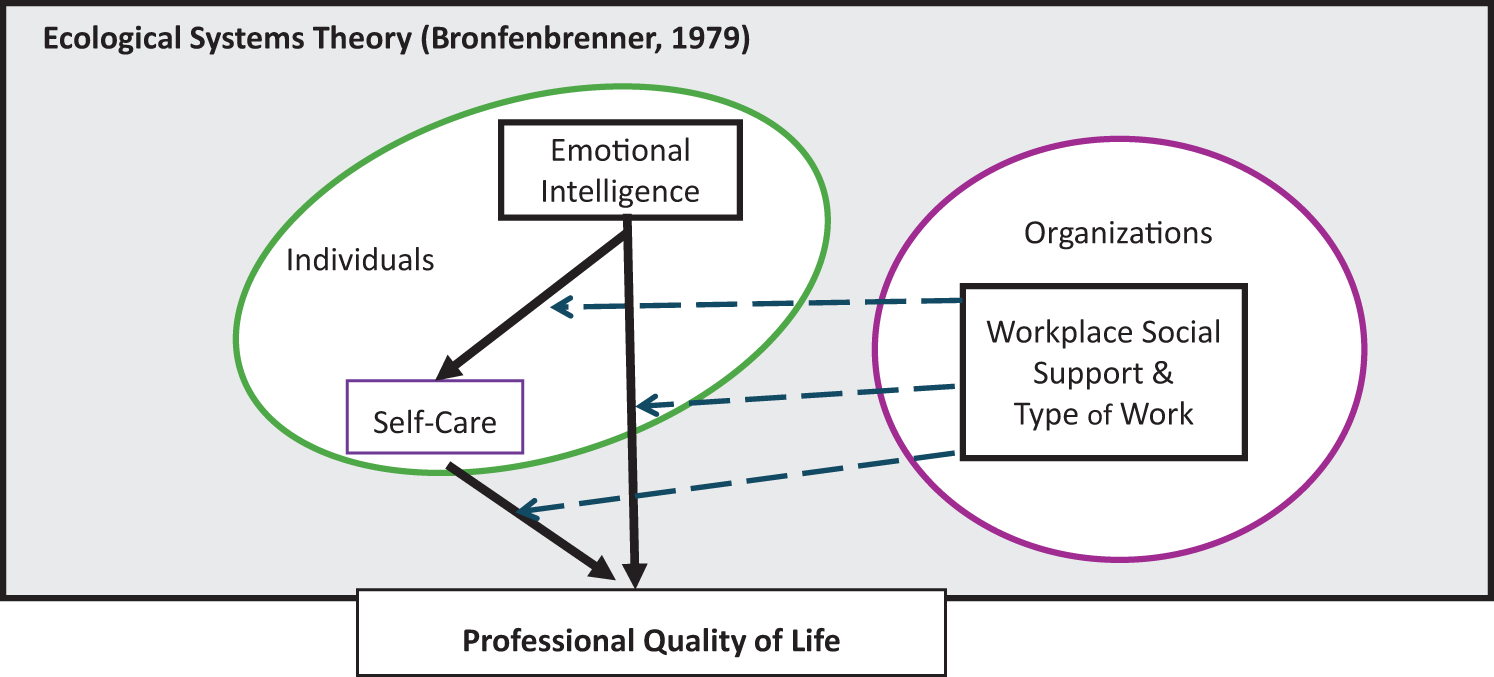
Stamm HB. Professional quality of life: compassion satisfaction and fatigue. Pocadello. 2010. https://proqol.org/.
Sacco TL, Copel LC. Compassion satisfaction: a concept analysis in nursing. Nurs Forum. 2018;53(1):76–83. https://doi.org/10.1111/nuf.12213.
Google Scholar
Youn H, Lee M, Jang SJ. Person-centred care among intensive care unit nurses: a cross-sectional study. Intensive And Crit Care Nurs. 2022;73:103293. https://doi.org/10.1016/j.iccn.2022.103293.
Google Scholar
Zhang Y-Y, Han W-L, Qin W, Yin H-X, Zhang C-F, Kong C, Wang Y-L. Extent of compassion satisfaction, compassion fatigue and burnout in nursing: a meta-analysis. J Nurs Manag. 2018;26(7):810–19. https://doi.org/10.1111/jonm.12589.
Google Scholar
Figley CR. Compassion fatigue: Toward a new understanding of the costs of caring. In secondary traumatic stress: self-care issues for clinicians, researchers, & educators. Vol. 2nd. Sidran Press; 1995. p. 3–28.
Joinson C. Coping with compassion fatigue. Nursing. 1992;22(4):116, 118–119, 120.
Google Scholar
Peters E. Compassion fatigue in nursing: a concept analysis. Nurs Forum. 2018;53(4):466–80. https://doi.org/10.1111/nuf.12274.
Google Scholar
Sinclair S, Raffin-Bouchal S, Venturato L, Mijovic-Kondejewski J, Smith-MacDonald L. Compassion fatigue: a meta-narrative review of the healthcare literature. Int J Nurs Stud. 2017;69:9–24. https://doi.org/10.1016/j.ijnurstu.2017.01.003.
Google Scholar
Sorenson C, Bolick B, Wright K, Hamilton R. An evolutionary concept analysis of compassion fatigue. J Nurs Scholarsh. 2017;49(5):557–63. https://doi.org/10.1111/jnu.12312.
Google Scholar
Garnett A, Hui L, Oleynikov C, Boamah S. Compassion fatigue in healthcare providers: a scoping review. BMC Health Serv Res. 2023;23(1):1336. https://doi.org/10.1186/s12913-023-10356-3.
Google Scholar
Sorenson C, Bolick B, Wright K, Hamilton R. Understanding compassion fatigue in healthcare providers: a review of current literature. J Nurs Scholarsh. 2016;48(5):456–65. https://doi.org/10.1111/jnu.12229.
Google Scholar
Maslach C, Jackson SE. The measurement of experienced burnout. J Organizational Behav. 1981;2(2):99–113.
Google Scholar
Maslach C, Schaufeli WB, Leiter MP. Job Burnout. 2001;52:397–422. https://doi.org/10.1146/annurev.psych.52.1.397.
Google Scholar
Bianchi R, Truchot D, Laurent E, Brisson R, Schonfeld I. Is burnout solely job-related? A critical comment. Scand J Psychol. 2014;55:357–61. https://doi.org/10.1111/sjop.12119.
Google Scholar
Demerouti E, Bakker AB, Peeters MCW, Breevaart K. New directions in burnout research. Eur J Work Organ Psy. 2021;30(5):686–91. https://doi.org/10.1080/1359432X.2021.1979962.
Google Scholar
Edu-Valsania S, Laguia A, Moriano J. Burnout: a review of theory and measurement. Int J Environ Res Pub Health And Public Health. 2022, (1780;19. https://doi.org/10.3390/ijerph19031780.
Maslach C, Leiter MP. Understanding the burnout experience: Recent research and its implications for psychiatry. World Pscychiatry. 2016;15:103–11. https://doi.org.ezproxy.brunel.ac.uk/10.1002/wps.20311
Cavanagh N, Cockett G, Heinrich C, Doig L, Fiest K, Guichon JR, Page S, Mitchell I, Doig CJ. Compassion fatigue in healthcare providers: a systematic review and meta-analysis. Nurs Ethics. 2020;27(3):639–65. https://doi.org/10.1177/0969733019889400.
Google Scholar
Maillet S, Read E. Work environment characteristics and emotional intelligence as correlates of nurses’ compassion satisfaction and compassion fatigue: a cross-sectional survey study. Nurs Rep. 2021;11(4):847–58. https://doi.org/10.3390/nursrep11040079.
Google Scholar
Xie W, Chen L, Feng F, Okoli CTC, Tang P, Zeng L, Jin M, Zhang Y, Wang J. The prevalence of compassion satisfaction and compassion fatigue among nurses: a systematic review and meta-analysis. Int J Nurs Stud. 2021;120:103973. https://doi.org/10.1016/j.ijnurstu.2021.103973.
Google Scholar
Leo CG, Sabina S, Tumolo MR, Bodini A, Ponzini G, Sabato E, Mincarone P. Burnout among healthcare workers in the COVID 19 era: a review of the existing literature. Front Public Health. 2021;9. https://www.frontiersin.org/articles/10.3389/fpubh.2021.750529.
Zhang X, Song Y, Jiang T, Ding N, Shi T. Interventions to reduce burnout of physicians and nurses: an overview of systematic reviews and meta-analyses. Med (baltim). 2020;99(26). https://journals.lww.com/md-journal/fulltext/2020/06260/interventions_to_reduce_burnout_of_physicians_and.89.aspx.
De Simone S, Vargas M, Sevillo G. Organizational strategies to reduce physician burnout: a systematic review and meta-analysis. Aging Clin Exp Res. 2021;33(4):883–94. https://doi.org.ezproxy.brunel.ac.uk/10.1007/s40520-019-01368-3 .
DeChant PF, Acs A, Rhee KB, Boulanger TS, Snowdon JL, Tutty MA, Sinsky CA, Craig KJT. Effect of organization-directed workplace interventions on Physician burnout: a systematic review. Mayo Clinic Proc: Innovations, Qual & Outcomes. 2019;3(4):384–408. https://doi.org/10.1016/j.mayocpiqo.2019.07.006.
Google Scholar
Fox S, Lydon S, Byrne D, Madden C, Connolly F, O’Connor P. A systematic review of interventions to foster physician resilience. Postgrad Med J. 2018;94(1109):162–70. https://doi.org/10.1136/postgradmedj-2017-135212.
Panagioti M, Panagopoulou E, Bower P, Lewith G, Kontopantelis E, Chew-Graham C, Dawson S, van Marwijk H, Geraghty K, Esmail A. Controlled interventions to reduce burnout in physicians: a systematic review and meta-analysis. JAMA Intern Med. 2017;177(2):195–205. https://doi.org/10.1001/jamainternmed.2016.7674.
Google Scholar
Petrie K, Crawford J, Baker STE, Dean K, Robinson J, Veness BG, Randall J, McGorry P, Christensen H, Harvey SB. Interventions to reduce symptoms of common mental disorders and suicidal ideation in physicians: a systematic review and meta-analysis. Lancet Psychiatry. 2019;6(3):225–34. https://doi.org/10.1016/S2215-0366(18)30509-1.
Google Scholar
Coles E, Anderson J, Maxwell M, Harris FM, Gray NM, Milner G, MacGillivray S. The influence of contextual factors on healthcare quality improvement initiatives: a realist review. Systematic Rev. 2020;9(1):94. https://doi.org/10.1186/s13643-020-01344-3.
Google Scholar
Chen C-C, Lan Y-L, Chiou S, Y-C. The effect of emotional labor on the physical and mental health of health professionals: emotional exhaustion has a mediating effect. Healthcare. 2023;11(1):104. https://doi.org/10.3390/healthcare11010104.
Maben J, Bridges J. Covid-19: Supporting nurses’ psychological and mental health. J Clin nursing. 2020;29(15–16):2742–50. https://doi.org/10.1111/jocn.15307.
Google Scholar
Agler R, De Boeck P. On the interpretation and use of mediation: multiple perspectives on mediation analysis. Front psychol. 2017;8. https://doi.org/10.3389/fpsyg.2017.01984.
Rohlf VI, Scotney R, Monaghan H, Bennett P. Predictors of professional quality of life in veterinary professionals. J Vet Med Educ. 2022;49(3):372–81. https://doi.org/10.3138/jvme-2020-0144.
Google Scholar
Rohrer JM, Hünermund P, Arslan RC, Elson M. That’s a lot to process! Pitfalls of popular path models. Adv Met pract psychol Sci. 2022;5(2). https://doi.org/10.1177/25152459221095827.
Bronfenbrenner U. The ecology of human development. Harvard University Press; 1979.
Google Scholar
Mayer JD, Salovey P. The intelligence of emotional intelligence. Intelligence. 1993;17:433–42.
Google Scholar
Sarrionandia A, Mikolajzak. A meta-analysis of the possible behavioural and biological variables linking trait emotional intelligence to health. Health Psychol Rev. 2020;14(2):220–44. https://doi.org/10.1080/17437199.2019.1641423.
Google Scholar
Lea R, Davis SK, Mahoney B, Qualter P. Do emotionally intelligent adolescents flourish or flounder under pressure? Linking emotional intelligence to stress regulation mechanisms. Pers Indiv Differ. 2023;201:111943. https://doi.org/10.1016/j.paid.2022.111943.
Google Scholar
Ma J, Zeng Z, Fang K. Emotionally savvy employees fail to enact emotional intelligence when ostracized. Pers Indiv Differ. 2022;185:111250. https://doi.org/10.1016/j.paid.2021.111250.
Google Scholar
Pena-Sarrionandia A, Mikolajczak M, Gross JJ. Integrating emotion regulation and emotional intelligence traditions: a meta-analysis. Front psychol. 2015;6:article 160.
Google Scholar
Matarese M, Lommi M, Marinis MGD, Riegel B. A systematic review and integration of concept analyses of self-care and related concepts. J Nurs scholarsh. 2018;50(3):296–305. https://doi.org/10.1111/jnu.12385.
Riegel B, Dunbar SB, Fitzsimons D, Freedland KE, Lee CS, Middleton S, Stromber A, Vellone E, Webber DE, Jaarsma T. Self-care research: Where are we now? Where are we going? Int J Nurs Stud. 2021;116. https://doi-org.ezproxy.brunel.ac.uk/10.1016/j.ijnurstu.2019.103402.
Keesler JM, Troxel J. They care for others, but what about themselves? Understanding self-care among DSPs’ and its relationship to professional quality of life. Intellect Dev Disab. 2020;58(3):221–40. https://doi.org/10.1352/1934-9556-58.3.221.
Google Scholar
Nogueiro J, Cañas-Lerma AJ, Cuartero-Castañer ME, Bolaños I. The professional quality of life and its relation to self-care in mediation professionals. Soc Work Soc Sci Rev. 2022;23:55–73. https://doi.org/10.1921/swssr.v23i1.1972.
Google Scholar
Bermejo-Martins E, Luis EO, Fernandez-Berrocal P, Martinez M, Sarrionandia A. The role of emotional intelligence and self-care in the stress perception during COVID-19 outbreak: an intercultural moderated mediation analysis. Pers Indiv Differ. 2021;177:110679. https://doi.org/10.1016/j.paid.2021.110679.
Google Scholar
Antonovsky A. Health, stress, and coping. Jossey-Bass; 1979.
Antonovsky A. Unraveling the mystery of health: how people manage stress and stay well. Jossey-Bass; 1987.
Zapf D, Kern M, Tschan F, Holman D, Semmer NK. Emotion work: A work psychology perspective. Annu Rev Organ Psychol Organ Behav. 2021;8(1):139–72.
Google Scholar
Peacock A. Compassion satisfaction, compassion fatigue, and vicarious trauma. Nurs ManAge. 2023;54(1). https://journals.lww.com/nursingmanagement/fulltext/2023/01000/compassion_satisfaction,_compassion_fatigue,_and.4.aspx
Rivera-Kloeppel B, Mendenhall T. Examining the relationship between self-care and compassion fatigue in mental health professionals: a critical review. Traumatology. 2023;29(2):163.
Google Scholar
Sansó N, Galiana L, Oliver A, Tomás-Salvá M, Vidal-Blanco G. Predicting professional quality of life and life satisfaction in Spanish nurses: a cross-sectional study. Int J Environ Res Pub Health and Public Health. 2020;17(12). https://doi.org/10.3390/ijerph17124366.
Kong F, Gong X, Sajjad S, Yang K, Zhao J. How is emotional intelligence linked to life satisfaction? The mediating role of social support, positive affect and negative affect. J Retailing Happoness Stud. 2019;20:2733–45. https://doi.org/10.1007/s10902-018-00069-4.
Google Scholar
Harris JI, Winskowski AM, Engdahl BE. Types of workplace social support in the prediction of job satisfaction. The Career Devel Q. 2007;56(2):150–56. https://doi.org/10.1002/j.2161-0045.2007.tb00027.x.
Google Scholar
Browning BR, McDermott RC, Scaffa ME. Transcendent characteristics as predictors of Counselor professional quality of life. J Ment Health counselling. 2019;41(1):51–64. https://doi.org/10.17744/mehc.41.1.05.
Google Scholar
Duarte J. Professional quality of life in nurses: contribution for the validation of the Portuguese version of the professional quality of life scale-5 (ProQOL-5). Analise PsicoLogica. 2017;35. https://doi.org/10.14417/ap.1260.
Tran ANP, To QG, Huynh V-AN, Le KM, To KG. Professional quality of life and its associated factors among Vietnamese doctors and nurses. BMC Health Serv Res. 2023;23(1):924. https://doi.org/10.1186/s12913-023-09908-4.
Google Scholar
Yılmaz G, Üstün B. Sociodemographic and professional factors influencing the professional quality of life and post-traumatic growth of oncology nurses*. J Psychiatr Nurs. 2019;10(4):241–50. https://doi.org/10.14744/phd.2019.43255.
Google Scholar
Ball HL. Conducting online surveys. J Hum LAct. 2019;35(3):413–17. https://doi.org/10.1177/0890334419848734.
Google Scholar
Thompson CB, Panacek EA. Research study designs: Non-experimental. Air Med J. 2007;26(1):18–22. https://doi.org/10.1016/j.amj.2006.10.003.
Google Scholar
Vogt WP. The dictatorship of the problem: Choosing research methods. Methodol Innov Online. 2008;3(1):1–17. https://doi.org/10.4256/mio.2008.0006.
Google Scholar
NSW Government. NSW health workforce Data. 2023. https://www.psc.nsw.gov.au/assets/psc/PSC-2023-Workforce-Profile-Report.pdf. NSW Public Commission.
Galiana L, Oliver A, Arena F, Simone GD, Tomas JM, Vidal-Blanco G, Munoz-Martinez I, Sanso N. Development and validation of the short professional quality of life scale based on versions IV and V of the professional quality of life scale. Health And Qual Of Life Outcomes. 2020;18:364. https://doi.org/10.1186/s12955-020-01618-3.
Google Scholar
Wong C-S, Law KS. The effects of leader and follower emotional intelligence on performance and attitude: an exploratory study. Leadersh Q. 2002;13(3):243–74. https://doi.org.ezproxy.brunel.ac.uk/10.1016/S1048-9843(02)00099-1
Lee J, Miller SE, Bride BE. Development and initial validation of the self-care practices scale. Soc Work. 2020;65(1):21–28. https://doi.org.ezproxy.brunel.ac.uk/10.1093/sw/swz045.
Cook-Cottone CP, Guyker WM. The development and validation of the mindful self-care scale (MSCS): An assessment of practices that support positive embodiment. Mindfulness. 2018;9:161–75.
Google Scholar
Li Q, Xu L, Wang Y, Zhu Y, Huang Y. Exploring the self-care practices of social workers in China under the COVID-19 pandemic. Soc Work And Policy. 2022;16(3):265–74. https://doi.org.ezproxy.brunel.ac.uk/10.1111/aswp.12266
Bloomquist K, Wood L, Friedmeyer-Trainor K, Kim H-W. Self-care and professional quality of life: Predictive factors among MSW practitioners. Adv Soc Work. 2015;16(2):292–311. https://doi.org/10.18060/18760.
Bur H, Bethelsen H, Moncada S, Nubling M, Dupre E, Demiral Y, Oudyk J, Kristensen TS, Llorens C, Navarro A, Lincke H-J, Bocerean C, Sahan S, Prhrt P, A., Copsoq Network I. The third version of the Copenhagen psychosocial questionnaire. Saf Health Work. 2019;10(4):482–503. https://doi.org/10.1016/j.shaw.2019.10.002.
Google Scholar
Hayes AF. Introduction to mediation, moderation, and conditional process analysis: A regression-based approach. 3rd. The Guilford Press; 2022. https://ebookcentral.proquest.com/lib/jcu/detail.action?docID=6809031.
Hayes AF, Coutts JJ. Use omega rather than Cronbach’s alpha for estimating reliability. But …. Commun Methods and measures. 2020;14(1):1–24. https://doi.org/10.1080/19312458.2020.1718629.
Google Scholar
Kalkbrenner MT. Alpha, omega, and H internal consistency reliability estimates: Reviewing these options and when to use them. Couns Outcome Res And evaluation. 2023;14(1):77–88. https://doi.org/10.1080/21501378.2021.1940118.
Google Scholar
Hayes AF. Partial, conditional, and moderated moderated mediation: Quantification, inference, and interpretation. Commun Monogr. 2018;85(1):4–40. https://doi.org/10.1080/03637751.2017.1352100.
Google Scholar
Ma J, Zeng Z, Fang K. Emotionally savvy employees fail to enact emotional intelligence when ostracized. Pers Indiv Differ. 2021;185:111250. https://doi.org/10.1016/j.paid.2021.111250.
Google Scholar
Singh J, Karanika-Murray M, Baguley T, Hudson J. A systematic review of job demands and resources associated with compassion fatigue in mental health professionals. Int J Environ Res Pub Health And Public Health. 2020;17(19). https://doi.org/10.3390/ijerph17196987.
Kim HJ, Hur W-M, Moon T-W, Jun J-K. Is all support equal? The moderating effects of Supervisor, coworker, and organizational support on the link between emotional labor and job performance. BRQ Bus Res Q. 2017;20(2):124–36. https://doi.org/10.1016/j.brq.2016.11.002.
Google Scholar
Ormiston HE, Nygaard MA, Apgar S. A systematic review of secondary traumatic stress and compassion fatigue in teachers. Sch Ment Health. 2022;14(4):802–17. https://doi.org/10.1007/s12310-022-09525-2.
Google Scholar
Hunsaker S, Chen H-C, Maughan D, Heaston S. Factors that influence the development of compassion fatigue, burnout, and compassion satisfaction in emergency department nurses. J Nurs scholarsh. 2015;47(2):186–94. https://doi.org/10.1111/jnu.12122.
Google Scholar
Sanchez-Gomez M, Sadovyy M, Breso E. Health-care professionals amid the COVID-19 Pandemic: how emotional intelligence may enhance work performance traversing the mediating role of work engagement. J Clin Med. 2021;10(18). https://doi.org/10.3390/jcm10184077.
Alonazi WB. The impact of emotional intelligence on job performance during COVID-19 crisis: a cross-sectional analysis. Phychol Res Behav Manag. 2020;13(null):749–57. https://doi.org/10.2147/PRBM.S263656.
Google Scholar
Mackay SJ, Baker R, Collier D, Lewis S. A comparative analysis of emotional intelligence in the UK and Australian radiographer workforce. Radiography. 2013;19(2):151–55. https://doi.org/10.1016/j.radi.2012.11.005.
Google Scholar
Shah DK. WLEIS as a measure of emotional intelligence of healthcare professionals: a confirmatory factor analysis. J Health Manag. 2022;24(2):268–74. https://doi.org/10.1177/09720634221088057.
Google Scholar
Sun H, Wang S, Wang W, Han G, Liu Z, Wu Q, Pang X. Correlation between emotional intelligence and negative emotions of front-line nurses during the COVID-19 epidemic: a cross-sectional study. J Clin nursing. 2021;30(3–4):385–96. https://doi.org/10.1111/jocn.15548.
Google Scholar
Weng H-C, Hung C-M, Liu Y-T, Cheng Y-J, Yen C-Y, Chang C-C, Huang C-K. Associations between emotional intelligence and doctor burnout, job satisfaction and patient satisfaction. Med Educ. 2011;45(8):835–42. https://doi.org/10.1111/j.1365-2923.2011.03985.x.
Google Scholar
Bhullar N, Schutte NS, Malouff JM. Associations of individualistic-collectivistic orientations with emotional intelligence, mental health, and satisfaction with life: a tale of two countries. Individual Differences Res. 2012;10(3).
Gunkel M, Schlagel C, Engle RL. Culture’s influence on emotional intelligence: An empirical study of nine countries. J Int Manag. 2014;20:256–74. https://doi.org/10.1016/j.intman.2013.10.002.
Google Scholar
Foster K, Fethney J, McKenzie H, Fisher M, Harkness E, Kozlowski D. Emotional intelligence increases over time: A longitudinal study of Australian pre-registration nursing students. Nurse Educ Today. 2017;55:65–70. https://doi.org/10.1016/j.nedt.2017.05.008.
Google Scholar
Cary H. A review of factors influencing employee retention within the HealthCare workforce. 2024.
Sybert QM. Healthcare workers with attitude: COVID-19 Pandemic affects their Work-related attitudes. 2024.
Weidman AJ. Establishing a sustainable healthcare delivery workforce in the wake of COVID-19. J Health Care Manag. 2022;67(4):234–43. https://doi.org/10.1097/JHM-D-22-00100.
Google Scholar
Bandura A. Social foundations of thought and action: a social cognitive theory. Prentice-Hall, Inc; 1986. p. xiii, 617.
Goncher ID, Sherman MF, Barnett JE, Haskins D. Programmatic perceptions of self-care emphasis and quality of life among graduate trainees in clinical psychology: The mediational role of self-care utilization. Train And Educ In Profesional Phychol. 2013;7(1):53–60. https://doi.org/10.1037/a0031501.
Google Scholar
Eaves T, Mauldin L, Megan CB, Robinson JL. The professional is the personal: A qualitative exploration of self-care practices in clinical infant mental health practitioners. J Soc Service Res. 2020;47(3):369–87. https://doi.org/10.1080/01488376.2020.1817228.
Google Scholar
Zeidner M, Mathews G, Olenik Shemesh D. Cognitive-social sources of wellbeing: Differentiating the roles of coping style, social support and emotional intelligence. J Happiness Stud. 2016;17:2481–501. https://doi.org/10.1007/s10902-015-9703-z.
Google Scholar
Cho H, Lee D. Effects of affective and cognitive empathy on compassion fatigue: Mediated moderation effects of emotion regulation capability. Pers Indiv Differ. 2023;211:112264. https://doi.org/10.1016/j.paid.2023.112264.
Google Scholar
Huang X, Chan SCH, Lam W, Nan X. The joint effect of leader-member exchange and emotional intelligence on burnout and work performance in call centers in China. Int J Hum Resour MAn. 2010;21(7):1124–44. https://doi.org/10.1080/09585191003783553.
Google Scholar
Psilopanagioti A, Anagnostopoulos F, Mourtou E, Niakas D. Emotional intelligence, emotional labor, and job satisfaction among physicians in Greece. BMC Health Serv Res. 2012;12(1):463. https://doi.org/10.1186/1472-6963-12-463.
Google Scholar
Barnett MD, Hays KN, Cantu C. Compassion fatigue, emotional labor, and emotional display among hospice nurses. Death Stud. 2022;46(2):290–96. https://doi.org/10.1080/07481187.2019.1699201.
Google Scholar
Pekaar KA. Self- and other-focused emotional intelligence. 2019. http://hdl.handle.net/1765/116478.
Pekaar KA, Bakker AB, van der Linden D, Born MP. Self- and other-focused emotional intelligence: development and validation of the Rotterdam emotional intelligence scale (REIS). Pers Indiv Differ. 2018;120:222–33. https://doi.org/10.1016/j.paid.2017.08.045.
Google Scholar
Asensio-Martínez Á, Leiter MP, Gascón S, Gumuchian S, Masluk B, Herrera-Mercadal P, Albesa A, García-Campayo J. Value congruence, control, sense of community and demands as determinants of burnout syndrome among hospitality workers. Int J Occup Saf Ergon. 2019;25(2):287–95. https://doi.org/10.1080/10803548.2017.1367558.
Google Scholar
Nahum-Shani I, Henderson MM, Lim S, Vinokur AD. Supervisor support: Does supervisor support buffer or exacerbate the adverse effects of supervisor undermining? J Appl psychol. 2014;99(3):484–503. https://doi.org/10.1037/a0035313.
Google Scholar
Kim N, Kang YJ, Choi J, Sohn YW. The crossover effects of Supervisors’ workaholism on subordinates’ turnover intention: the mediating role of two types of job demands and emotional exhaustion. Int J Environ Res Pub Health And Public Health. 2020;17(21):7742. https://doi.org/10.3390/ijerph17217742.
Google Scholar
Tucker MK, Jimmieson NL, Bordia P. Supervisor support as a double-edged sword: Supervisor emotion management accounts for the buffering and reverse-buffering effects of supervisor support. Int J Stress Manag. 2018;25(1):14–34. https://doi.org/10.1037/str0000046.
Google Scholar
Charoensukmongkol P, Moqbel M, Gutierrez-Wirsching S. The role of coworker and supervisor support on job burnout and job satisfaction. J Educ Chang Adv Manag Res. 2016;13(1). https://doi.org/10.1108/JAMR-06-2014-0037.
Gillet N, Morin AJ, Fouquereau E. A person-centered perspective on work behaviors. Curr Phychol. 2023;42(32):28527–48.
Google Scholar
Choi JH, Miyamoto Y. Cultural differences in self-rated health: the role of influence and adjustment. Jpn Psychol Res. 2022;64(2):156–69. https://doi.org/10.1111/jpr.12405.
Google Scholar
Eriksson M, Ghazinour M, Hammarström A. Different uses of Bronfenbrenner’s ecological theory in public mental health research: What is their value for guiding public mental health policy and practice? Soc Theor Health. 2018;16(4):414–33. https://doi.org/10.1057/s41285-018-0065-6.
Google Scholar
NSW Government. (People matter, NSW Public Sector employee survey 2024, central coast local health district. 2024. https://files.dcu.nsw.gov.au/dpc/pmse2024/Health/Central%20Coast%20Local%20Health%20District.pdf.


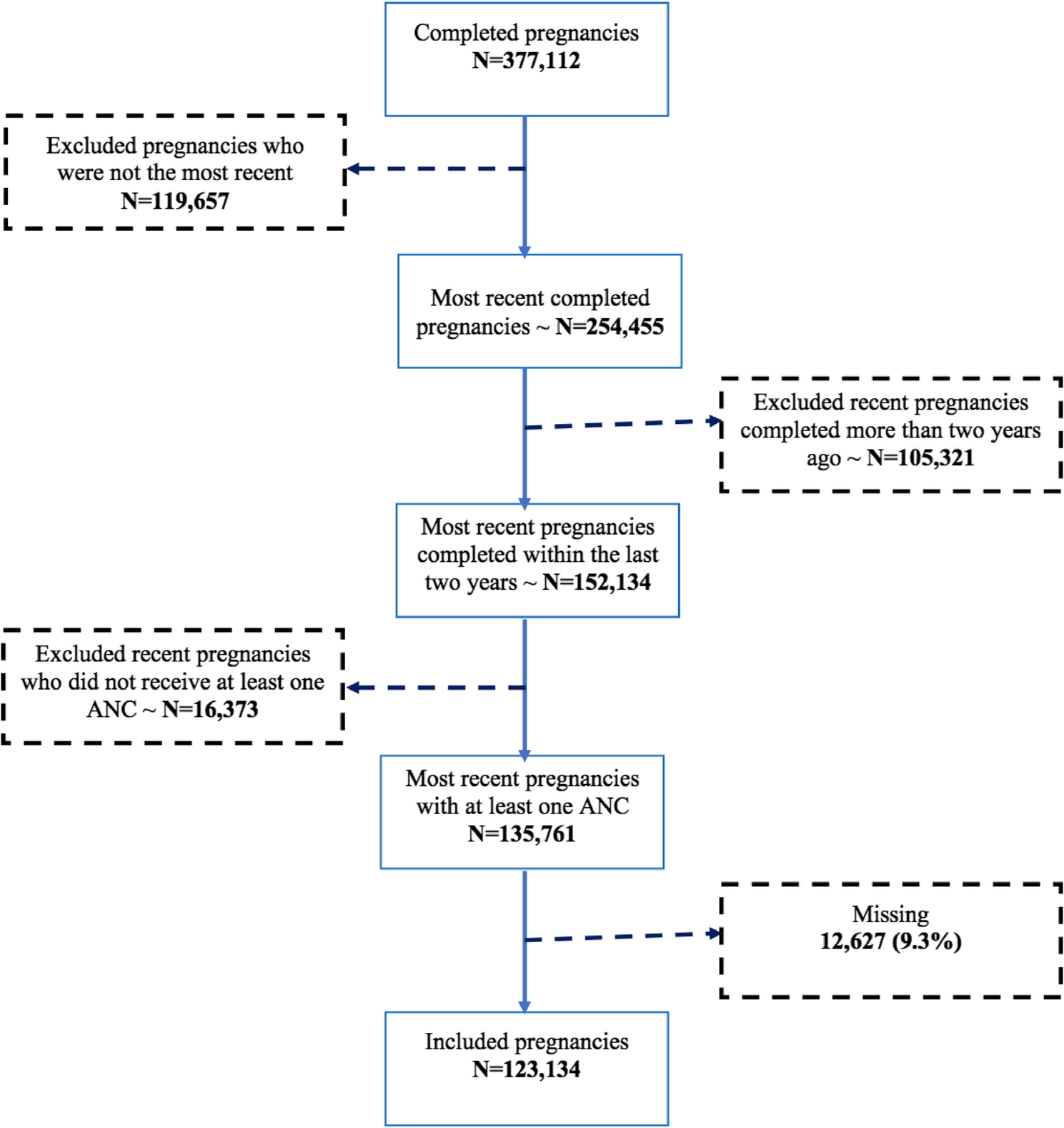
The data for this study were sourced from the most recent Demographic and Health Survey (DHS) conducted in thirty-six (36) sub-Saharan African countries. The DHS is a nationally representative sample survey that collects data on demographic and health indicators, including measures of reproductive health such as ANC attendance among women of reproductive age (15–49 years). The data for the current study were drawn from DHS surveys conducted between 2007 and 2019 in the thirty-six countries involved in the study. The data were downloaded from the MEASURE DHS website at http://dhsprogram.com/data/available-datasets.cfm on February 1st, 2021. The list of countries by sub-region and the respective survey years and corresponding sample sizes are presented in Appendix 1 as part of the supplementary results.
The sample for this study was based on the last pregnancies completed by women aged 15–49 years within the 2 years preceding the DHS survey and who made at least one ANC visit during this index pregnancy. After pooling the data for the most recent surveys in the thirty-six countries, 377,112 pregnancies were identified within the preceding five years of the survey. Among them, 119,657 pregnancies that were not the most recent were excluded. Approximately 105,321 such pregnancies were completed more than two years before the survey and were excluded from the analysis as shown in Fig. 1.
Flow diagram showing the inclusion and exclusion criteria for selecting the study sample
A total of 152,134 pregnancies were completed within the last two years, among which 16,373 pregnancies that did not receive any ANC were excluded. The percentage of missing data on related variables for the current study is low (less than 6% on single variable and less than 10% for the whole data set). The analyses were thus limited to cases with complete data employing listwise or case wise deletions. Excluding missing cases from the final sample does not pose a challenge for the analysis because it is generally accepted that if the presence of missing data on related variables are unrelated to any other variable, then the data are missing completely at random, and data missing completely at random with a small amount of missing data (less than 10% as in the case of the current study) still provide reliable and valid results as analysis of all cases with complete data [18, 19]. Thus, the final analysis was based on 123,134 completed pregnancies with valid data on all the variables included in the analysis. A table showing the percentage of missing cases per variable has been presented in the supplementary materials (see Appendix 2 in the supplementary materials).
The outcome variable for this study was a time variable measured for each pregnancy (pregnant woman) subject to the risk of ANC initiation. The dependent variable equals the duration before the event of the first ANC attendance. The duration of the dependent variable was measured in months and ranged from 1 to 9 months.
The predictor variables for this study included factors associated with ANC according to the literature and available in the data sets. Previous studies have identified the factors associated with the utilization of ANC services in LMICs to include household wealth quintiles [12, 13, 17, 20,21,22,23,24,25], place of residence [9, 12, 24,25,26], female education [9, 12, 13, 22,23,24,25], desire for pregnancy [8, 12, 13, 23, 25], female occupation [9, 23], age [12, 24,25,26,27], pregnancy rank/parity [9, 23, 25, 26], mass media exposure [12, 23, 25], number of children under five [8, 9], sociocultural norms and practices [20, 25], women’s autonomy [9, 25], marital status [25], and husbands’ education [9]. Additionally, some studies provide evidence that the odds of ANC coverage are lower among women from households belonging to the poor wealth quintile, women who have no formal education or who are less educated [17, 20, 21, 25] and women living in rural areas [12, 20, 25, 26]. There is also empirical evidence showing the link between family/community involvement and utilization of ANC services [5], while others have noted the role of sociocultural factors [21, 25]. For example, in Ghana, women in predominantly Muslim areas appear to be more limited in their ability to participate in reproductive health decision-making [21]. Additionally, other factors, such as exposure to mass media, especially locally driven mass media, have been shown to strongly impact health service utilization [28]. Furthermore, there has been extensive research on barriers to ANC utilization in SSA. A systematic review of outcome measures and determinants of unmet reproductive health needs revealed that economic constraints, long-distance travel to access services and low education are among the key predictors of ANC utilization among women in some West African countries [22]. Again, the results of a systematic review and meta-analysis in Ethiopia showed that improving female education and women’s empowerment could reduce the magnitude of delayed ANC uptake [9]. The results of other studies also indicate that women with wanted pregnancies are more likely to receive antenatal care [8, 13, 23]. The results regarding place of residence show that while some studies [9, 20, 26] have found a strong relationship between ANC uptake and place of residence, others [13] have reported weak or no significant associations. Additionally, while some studies have shown a negative relationship between female age and ANC uptake [26], another study [13] has shown no such association.
The present study investigates variations in the first initiation of ANC over time during pregnancy and examines the influence of associated risk factors at the global SSA, controlling for covariates identified from previous research. Drawing on an adaptation of the Andersen behavioral model (1995), the various factors controlled for in this study were grouped into four categories consisting of environmental factors, predisposing characteristics, enabling factors and need factors, as shown in Fig. 2. The environmental/external factors included place of residence (urban or rural), country (all 36 countries included in the study) and sub-region (eastern, middle, southern or western Africa). Predisposing characteristics include respondent’s age at the birth of the child (in five-year age groups), highest level of education, type of occupation, marital status, mass media exposure (ranking variable from “very low” to “very high”)Footnote 1, and partner’s level of education. The enabling factors considered were household wealth quintile and women’s participation in the household’s decision-making processFootnote 2 (coded as involved in 0 – no decision; 1–1 decision; 2–2 decisions; 3–3 decisions; 4–4 decisions). Need factors included desire for pregnancy (wanted then, wanted later, wanted no more), number of births and ever had a pregnancy terminated. The list of independent variables and their categorization are shown in Table 1.
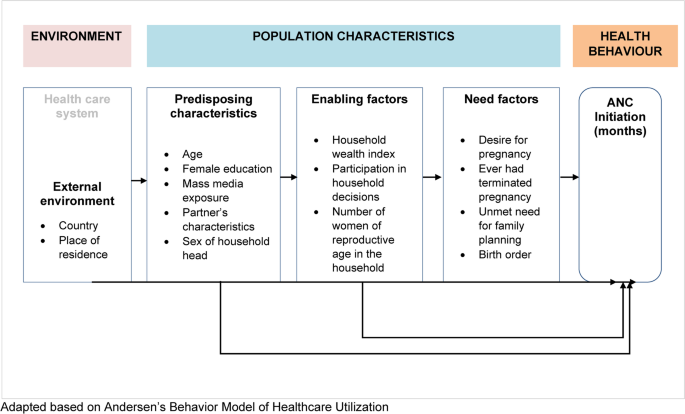
Conceptual Model Showing Factors Associated with initiation of antenatal care visits among women of reproductive age in sub-Saharan Africa
To ensure the reliability and accuracy of the regression models, a comprehensive multicollinearity test was conducted to assess correlation between all independent variables. Variables found to be highly correlated were systematically excluded. These variables were language, sub-region, and year of interview which were highly correlated with country of residence. However, due to the importance of these variables in the understanding of the context and to assess the variations in the chances of ANC initiation across the various sub-Saharan African regions, an alternative model excluding country was implemented. The alternate model accommodated the categorization of countries by sub-region and controlled for survey year. The results of the alternate model are included as supplementary results (see Appendix 4). These adjustments were made to enhance the clarity and interpretability of the models while addressing multicollinearity concerns.
The characteristics of the study sample were described using percentage distributions. All the independent variables, including survey year, were coded as categorical variables. The association between the timing of the first ANC visit and each independent variable was assessed using cross-tabulation with the Pearson chi-square test. Kaplan-Meier survivor curves were generated to examine the extent to which ANC initiation occurred over time according to the selected covariates. The Kaplan-Meier curves were generated to explore temporal trends in ANC initiation and to construct survival curves for participants stratified according to the selected covariates. The log-rank test was used to determine the significance of differences in survival distributions. At the multivariate level, a number of modeling techniques were explored, and model diagnostics and fitness tests were used to determine the best fit model for the data. The first modeling approach that was explored was multilevel modeling considering the nesting of respondents in countries, clusters and households. The intraclass coefficient (ICC) from the null model showed that only 0.6% (ICC = 0.0063) of the variation in ANC initiation was explained by between-cluster differences, indicating that a conventional one-level regression model fits the data better than a multilevel model [29]. After ruling out multilevel modeling, event history analysis was explored given the nature of the dependent variable. Discrete–time logit models were specified to examine the unadjusted and adjusted effects of each covariate on the dependent variable. The discrete-time survival analysis employed does not require an assumption of proportional hazards as piecewise exponentials [30]. In conducting the statistical analysis, the data were weighted to make the findings generalizable to women of reproductive age (15–49 years) within each country, and differences were tested for significance at the 5% level. All the statistical analyses were performed in R [31]. The analyses employed many R packages including survival [32], dplyr [33], knitr [34], haven [35], survey [36], gtools [37], numDervi [38], car [39], vim [40], summarytools [41], discsurv [42], survminer [43], flextable [44], officer [45], jtools [46], and finalfit [47].
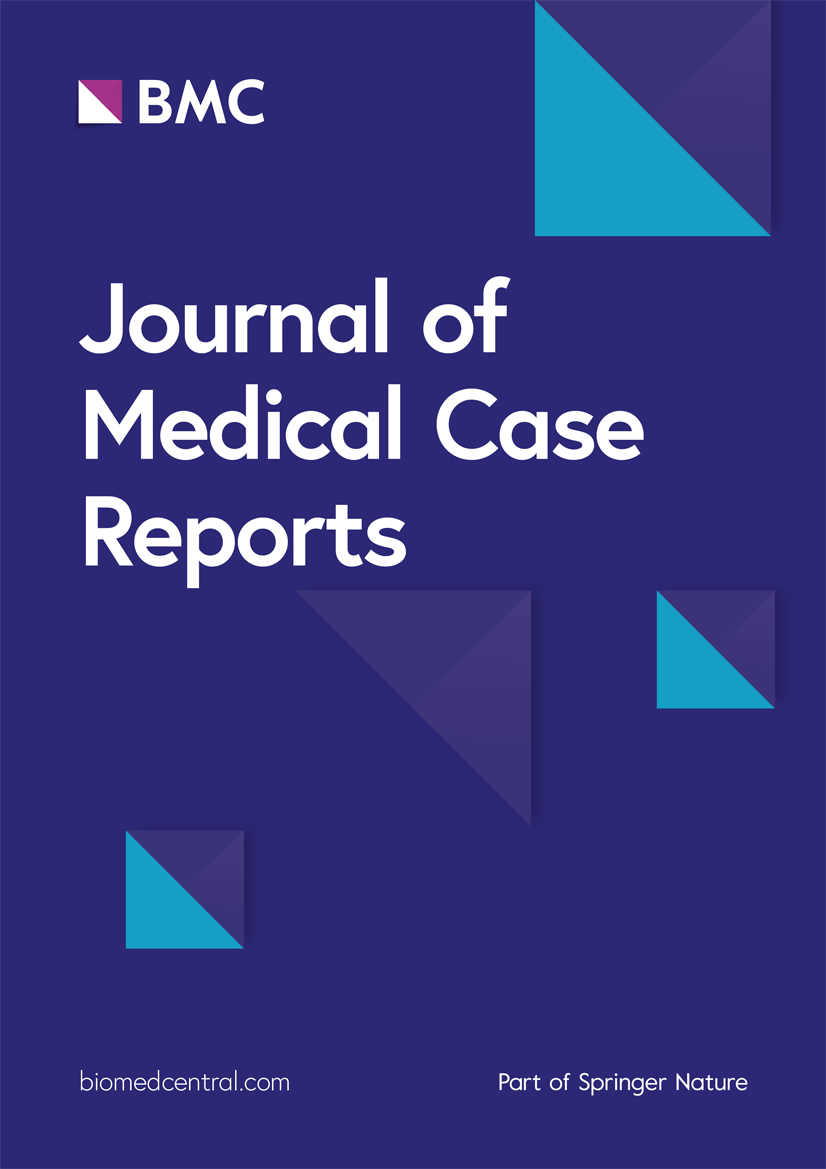
Brevundimonas vesicularis is a non-lactose fermenter, Gram-negative bacillus, and is usually isolated from clinical and environmental samples. It is an opportunistic pathogen that affects children and adults. Most cases may be due to underlying…

– Advertisement –
ISLAMABAD, Oct 21 (APP):The Space and Upper Atmosphere Research Commission (SUPARCO) has announced that the new moon of Jamadi ul awwal, 1447 AH, is expected to be born on October 21 at 17:25 PST.
At the time of sunset on…
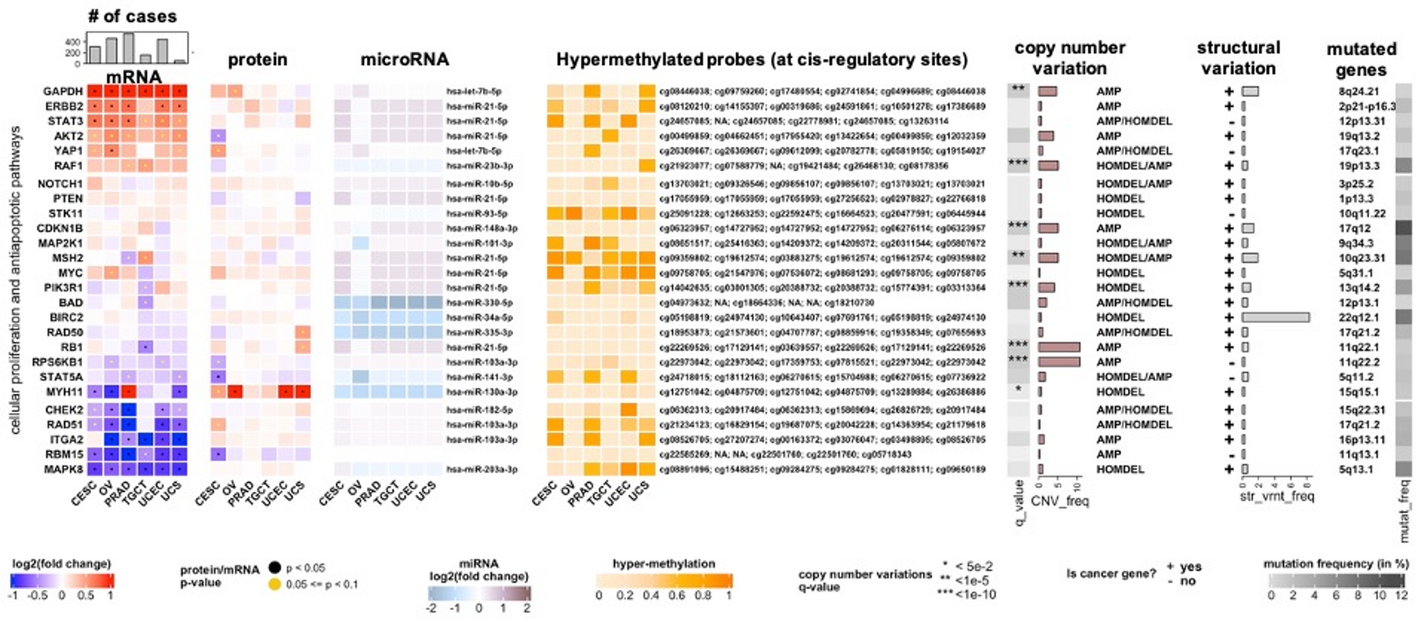
MultiModalGraphics is an R/Bioconductor package that leverages object-oriented S4 classes to visualize multimodal biological data with embedded statistical annotations. Originally developed for collaborative multi-omics studies [23,24,25], the…

Sean ‘Diddy’ Combs is appealing the conviction handed down to him earlier this year over prostitution charges relating to his former girlfriends and male sex workers.
The music mogul was given a 50-month sentence and a $500,000 fine…
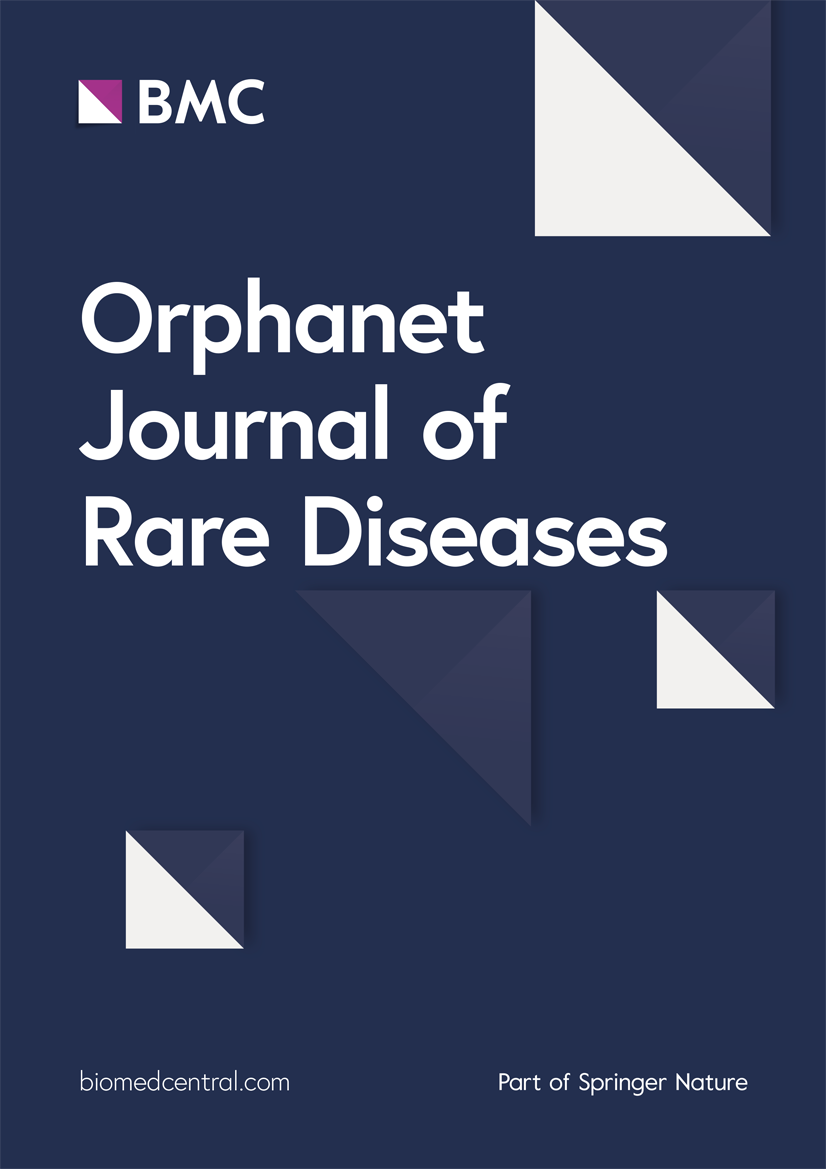
Sixty-nine infants (49% female) meeting eligibility criteria were identified and included in the investigation. The majority received treatment after symptom onset (N = 52, 75%) and had two copies of SMN2 (pre-symptomatic N = 17, 100%; symptomatic N = 48, 92%) with others having three copies. All infants were treated with available disease modifying therapies (Risdiplam [Evrysdi®], Nusinersen [Spinraza®],Onasemnogene-abeparvovec [Zolgensma®]), with nearly half having received a combination of treatments (pre-symptomatic N = 10, 59%; symptomatic N = 28, 54%). Interestingly, ten (19%) of the infants who received treatment after symptom onset were identified as having SMA following SMA screening without symptoms triggering a referral and diagnosis. Upon initial neurology evaluation eight of those infants (80%) already exhibited clear symptoms of SMA (ex. Loss of reflexes) which were identified at an average age of 16 days. The other two did not exhibit symptoms at the time of their initial neurology consultation, though developed symptoms before their treatment was administered an average of 7 days later.
Infants treated pre-symptomatically received treatment at a younger age (median = 0.50, IQR 0.44 months), than those treated after symptom onset (2.81, IQR 3.56 months, t = 17.67, p < 0.001, δ = 0.89). Nine infants (13%) were born prematurely, with all but one being born in the late preterm period (median 36 weeks). Other comorbidities included laryngo or tracheomalacia (N = 3, 4%), biliary atresia (N = 1, 1%), craniosynostosis (N = 1, 1%), extralobar sequestration (N = 1, 1%), paraesophageal hernia (N = 1, 1%), and milk protein allergy (N = 1, 1%).
Median age of infants at the time of their last VFSS was 7.92 months (IQR 4.83), with infants who received pre-symptomatic treatment younger at the time of their last exam (6.8 IQR 5.77 months) than those who received treatment after symptoms (8.35, IQR 4.71; t = 2.96, p = 0.04, δ = 0.33). Although the majority (80%, N = 55) of infants underwent swallow studies due to clinical symptoms, 20% (N = 14) underwent the exam without symptoms as part of a routine, high-risk workup. Significantly more infants who received pre-symptomatic treatment underwent a routine, high-risk VFSS (59%, N = 10) than did those who received symptomatic treatment (8%, N = 4, p < 0.001, OR 0.06). Nearly all infants (86%, N = 59) were evaluated while consuming thin liquids, with other consistencies observed including mildly thick (43%, N = 30), moderately thick (22%, N = 15).
At the time of last VFSS, 50% (N = 26) of symptomatic treated infants were receiving noninvasive ventilation or mechanical ventilation via tracheostomy (22/26, 85% strictly nocturnal), while only one of those treated pre-symptomatic required these supports (strictly nocturnal) (χ2 = 9.43, p = 0.002, OR 17.28). CHOP INTEND scores were available for 66% of infants, with a median score of 46 [16] out of 64. Table 1 provides a full listing of infant demographics and clinical characteristics.
Raters achieved scores corresponding to a Landis-Koch category of moderate or greater (kappa > 0.55) agreement in their reliability of analyzing all BabyVFSSImP© and ICCs of ≥ 0.72 for the Swallowtail components. While profound impairments in BabyVFSSImP© swallowing biomechanics were rare among infants who received pre-symptomatic treatment, they were common among infants treated after symptom onset. This was reflected in significantly worse (higher) scores in four BabyVFSSImP© domains (ts > 3.25, ps ≤ 0.01, δ > 0.42): Palatal-Pharyngeal Approximation, Airway Invasion/Laryngeal Closure, Aspiration, and Pharyngeal Transport and Clearance (Table 2). Specifications of the oropharyngeal swallowing biomechanics underlying these differences across treatment groups are outlined below, with a full listing of BabyVFSSImP© component scores provided in supplemental Table 2.
Bolus Extraction: Though the majority (76%, N = 13) of infants who received pre-symptomatic treatment promptly initiated sucking when presented with the nipple, all but one had to suck > 3 times to express sufficient bolus to swallow. Prompt initiation of sucking tended to be less common in infants treated after symptom onset (40%, N = 21), with 55% (N = 28) of these infants not initiating sucking at all (χ2(1) = 3.59, p = 0.06, OR 0.28).
Bolus Clearance: Infants who received pre-symptomatic treatment rarely exhibited profound impairments in the ability to clear the ingested liquid from their pharynx, with no infants exhibiting profound impairments in pharyngeal constriction ratio (PCR > 0.2cm2), tongue base retraction, or pharyngeal residue, and only one infant exhibiting profound reductions in soft palate elevation (6%, N = 1) and pharyngoesophageal segment opening (6%, N = 1). Clinical specifications of those pre-symptomatic infants with profound impairments are outlined in Table 3. This was in contrast to infants treated after symptom onset, for whom a significantly higher proportion of infants (23–43%) exhibited profound impairments in these processes (BabyVFSSImP©, χ2(1) > 4.45, p ≤ 0.03, OR > 9.21; SwallowTail pharyngeal constriction ratio, fisher’s exact p = 0.03, OR = 0). These deficits in the propulsion of the bolus through the pharynx among infants treated after symptom onset were reflected in elevated Swallowtail pharyngeal constriction ratio values (symptomatic m = 0.15, sd = 0.16; pre-symptomatic m = 0.03, sd = 0.02; t (53.80) = 5.10, p < 0.001, d = 0.88). No differences were observed between groups in pharyngoesophageal segment opening duration (symptomatic m = 0.24, sd = 0.09; pre-symptomatic m = 0.22, sd = 0.06); t(40.04) = 0.84, p = 0.41, d = 0.20).
Airway Protection: Penetration occurred in almost all infants in both pre-symptomatic (95%, N = 16) and symptomatic (90%, N = 47) treatment groups (p = 1). Although aspiration occurred less frequently, it was still commonly observed; occurring more frequently in infants treated after symptom onset (71%, N = 36) than pre-symptomatic (35%. N = 6, χ2(1) = 5.31, p = 0.02, OR 4.4). Interestingly, among those infants who aspirated, 17% (N = 7) were not reported to be exhibiting feeding difficulties, with VFSS’ done as part of high-risk referral (pre-symptomatic 67%, N = 4; symptomatic 8%, N = 3).
Although all pre-symptomatic treated infants were managing secretions without suctioning, and nearly all were consuming full age-appropriate nutrition (N = 15, 88%), similar to biomechanics, some pre-symptomatic treated infants did exhibit profound functional impairments. Clinical deficits among those pre-symptomatic treated infants who required alternative nutrition appeared 11 days following treatment, with the reason for tube provision ranging from swallowing deficits impeding safe oral nutrition to impairments in consuming sufficient oral nutrition to meet caloric requirements. Table 3 provides further specifications pertaining to the clinical conditions of those pre-symptomatic infants who exhibited profound impairments. Significantly more infants treated after symptom onset required suctioning for secretion management (38% vs 0%; fisher’s p = 0.002, OR 0) and were not consuming age-appropriate oral nutrition (50% vs. 12%; χ2 (1) = 17.33, p < 0.001, OR 20.35) than those treated pre-symptomatic. Table 4 provides a full listing of CEDAS scores.
Swallow biomechanics were associated with swallowing function, with the odds of an infant requiring suctioning for secretion management increasing significantly with increases in BabyVFSSImP© domain V: pharyngeal transport and bolus clearance scores (β = 0.30, z = 2.76, p = 0.006) and Swallowtail pharyngeal constriction ratio (β = 3.76, z = 1.83, p = 0.047). Among those domain V components, pharyngeal stripping wave was particularly predictive of suctioning needs (fisher’s exact p = 0.001, OR = 9.78). In contrast, the odds of an infant not achieving age-appropriate nutrition or hydration was significantly predicted by increases in domain I: lingual motion/swallow initiation (β = 0.26, z = 2.49, p = 0.013).